
A River Runs Through It—And So Does Ford

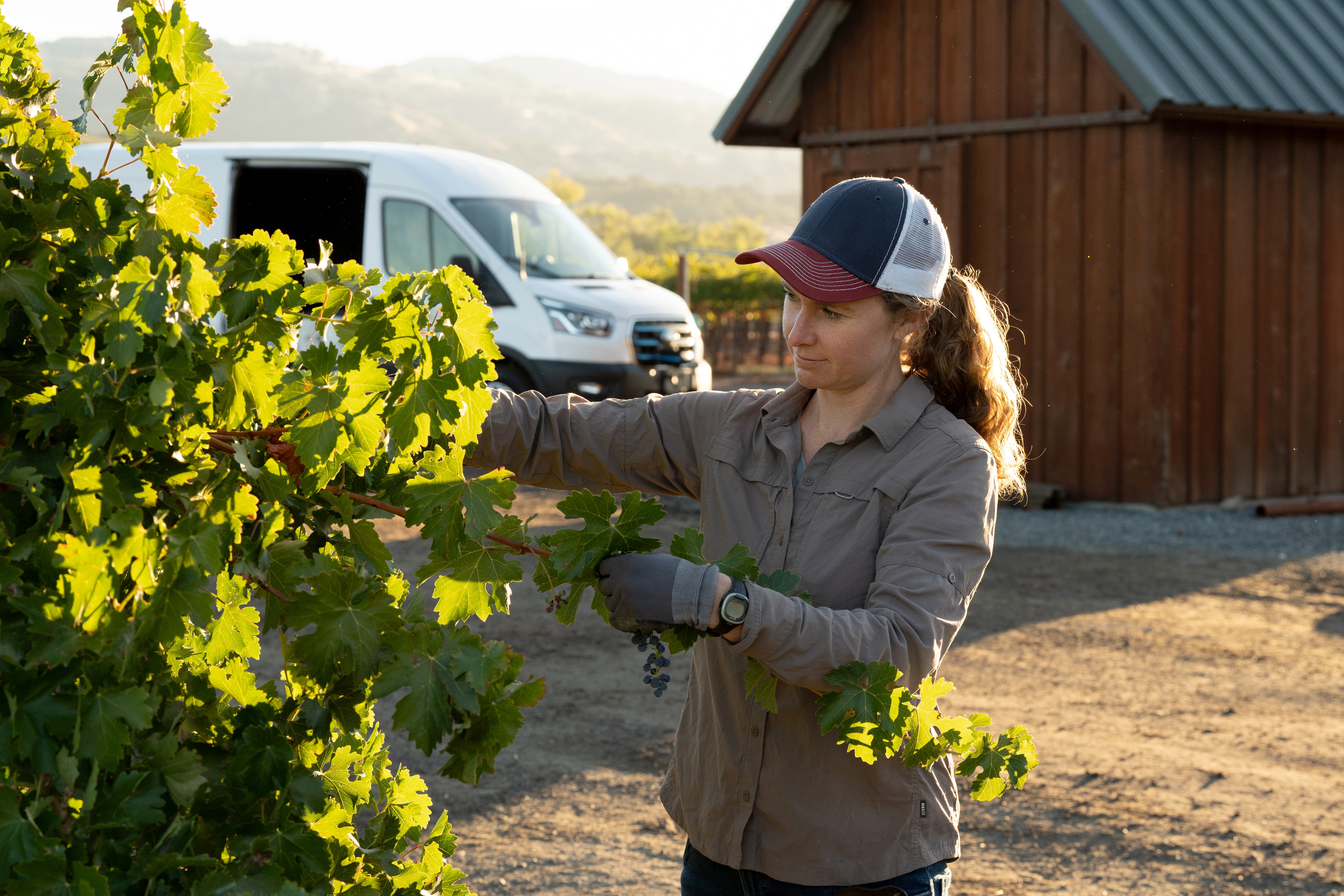

At Ford, our purpose has always been bigger than building vehicles. We are driven by a desire to build a better world.
We believe that every person has a right to clean air, clean water, and safe transportation.
That’s why we continue to pursue the ambitious goal of becoming carbon neutral across our vehicles, manufacturing facilities and supply chain no later than 2050.
This goal hasn’t changed, and we’re still on track to meet it. But we’re always innovating around how we get there — through better products, better business practices and better collaboration across our supply chain and in the communities where we live and work.
Ford has been transparent about our sustainable business practices for 26 years, and our 2025 Integrated Sustainability and Financial Report is our most comprehensive yet — backed by data that lends credibility to the steps we’re taking to drive progress. We were the first automaker to release a sustainability report, and that record of accountability and transparency continues today.
Over the last year, we decreased our carbon footprint across our vehicles and operations, while increasing the use of carbon-free and renewable electricity. We made electrified transportation more accessible and boosted the efficiency of our manufacturing plants and supply chain. We also ensured that we’re protecting people and the planet, and we continuously showed up — as we always have and always will — for our communities.
Here are the highlights:
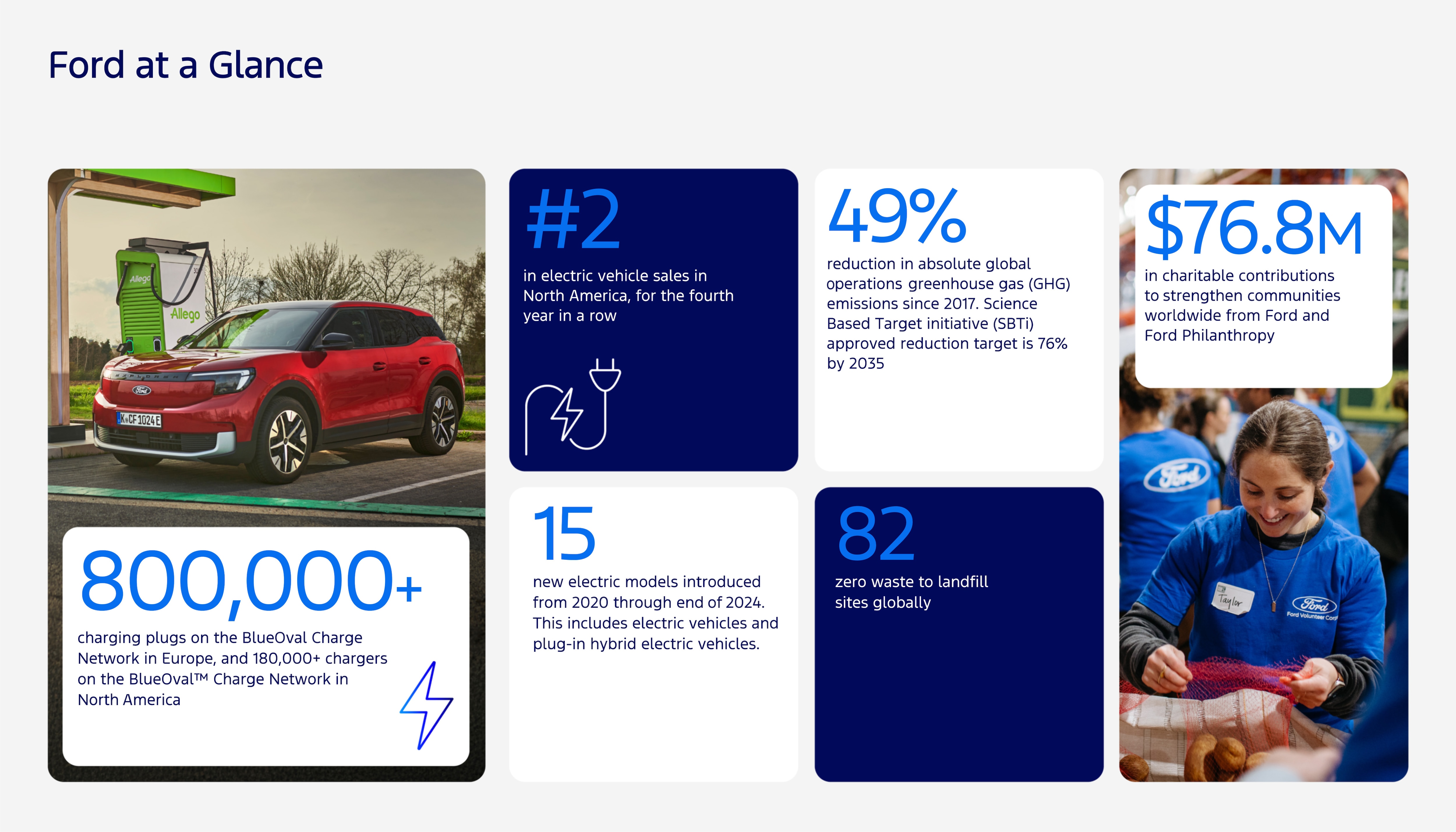
New this year, the report will include a Sustainability Statement in accordance with European Sustainability Reporting Standards. Through this first-time “Limited Assurance” accreditation, we are relying on data-driven analysis, evidence collection, and auditing to ensure that what we claim in our Sustainability Statement is proven and verified by a third party. This is a significant milestone for Ford and our industry, demonstrating once again Ford’s commitment to transparency and accountability.
Last year, more customers chose an electrified Ford vehicle than ever before, and we continue to offer a range of environmentally friendly choices to meet any need. Total Ford electrified vehicle sales (hybrid, plug-in hybrid and electric) hit a record in the U.S. in 2024 — up 38% from 2023.
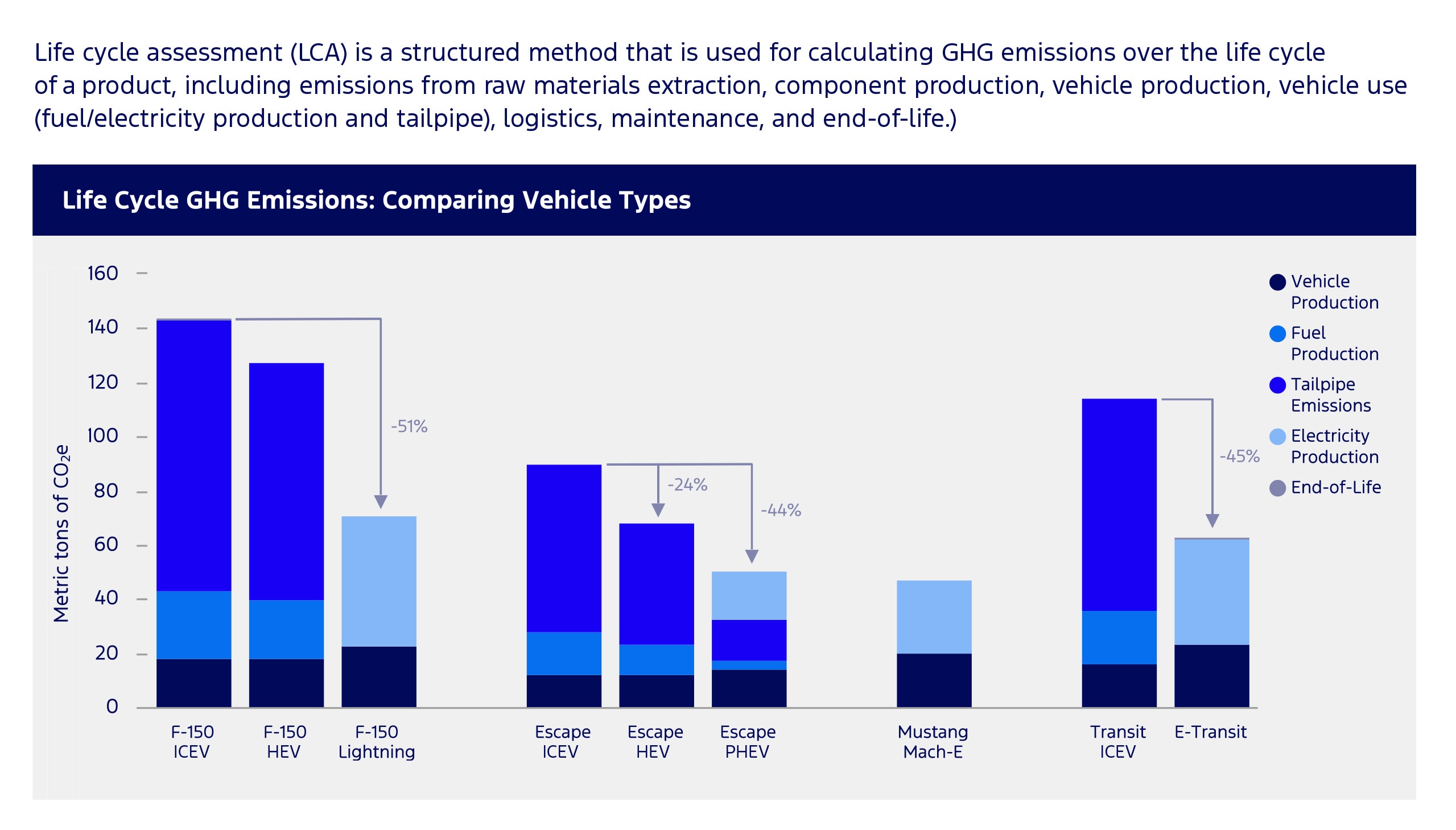
In this year’s report, we’ve added a new Life Cycle Assessment (LCA) section, which shows the lifetime Greenhouse Gas (GHG) emissions of our electric, hybrid and gas models, including impacts from raw materials extraction, manufacturing, fuel and charging emissions, and maintenance. Notably, our LCAs provide customers with helpful information to inform their purchasing decisions.
Ford is not just reducing GHG emissions from our vehicles, we’re also working to reduce emissions in our facilities and across our supply chain. Our manufacturing sites are models of innovation — conserving water, reducing waste, recycling materials, and improving energy efficiency.
Over the past decade, Ford recycled 2 billion pounds of aluminum during the manufacturing of our all-aluminum-body F-series models — enough to build roughly 37,000 F-series truck bodies each month. And by 2027, all our manufacturing in Michigan will be powered by the equivalent of 100% carbon-free electricity, including wind and solar-generated power.
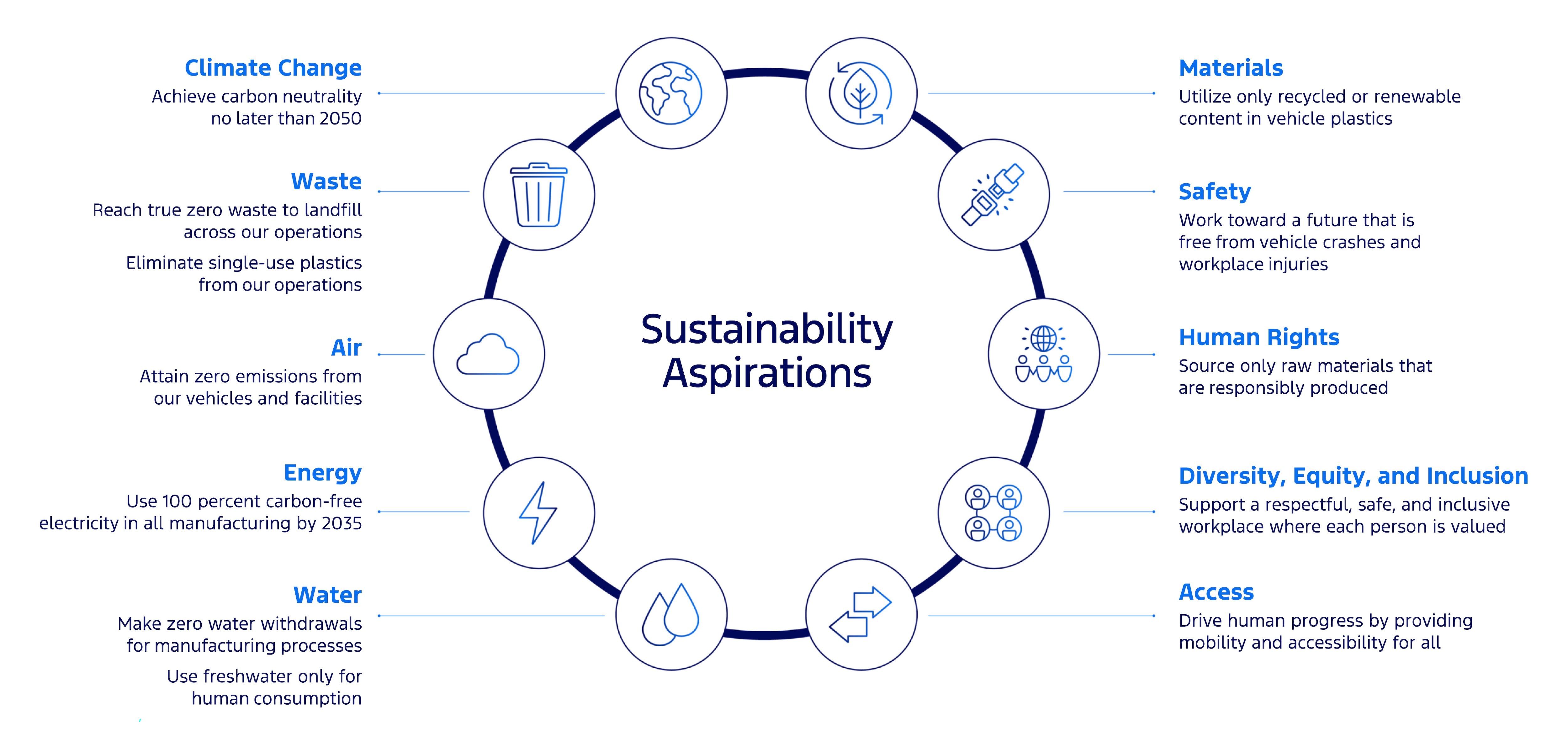
On the supply side, we set a new science-based target to reduce global supply chain emissions by 25% by 2030, relative to a 2023 baseline. We also helped launch the Transform: Auto initiative in North America to support suppliers adopting renewable energy, and increased supplier engagement in Manufacture 2030, which helps suppliers establish targets, measure, and reduce emissions.
Ford strives to ensure that everything we make — and everything that others make for us — is consistent with local laws and our own commitment to respecting human rights. In 2024, we updated our We Are Committed to Protecting Human Rights and the Environment policy to include a commitment to respecting the UN Declaration on the Rights of Indigenous Peoples.
We also ranked second overall and #1 in the Human Rights Category in Lead the Charge Coalition’s annual Leaderboard Report. We trained more than 800 Ford employees and nearly 588 of our suppliers in supply chain sustainability topics and conducted 1,394 supplier audits to ensure they are in compliance with our Supplier Code of Conduct. And we continue to increase transparency and due diligence in our EV battery supply chain to ensure ethical and responsible sourcing practices.
Ford’s commitment to making the world a better place begins in the communities where we live and work. We engage with communities in a variety of ways, in good times and bad — partnering with local organizations to protect the environment and provide essential services like fresh food and transportation, helping neighborhoods rebuild in the wake of disasters, and empowering people with the resources they need to thrive and prosper.
As our BlueOval City EV manufacturing complex comes to life in West Tennessee, we launched Ford’s Good Neighbor Plan — a $9 million investment in the local community that addresses a diverse range of needs, from youth programs to transportation services to job training.
Alongside Ford Philanthropy, we supported disaster relief efforts worldwide, including in response to flooding in Spain and Thailand, and in the U.S., Hurricanes Milton and Helene. We also celebrated a big moment: the reopening of the iconic Michigan Central Station as a hub for community, culture, and innovation in our hometown of Detroit.
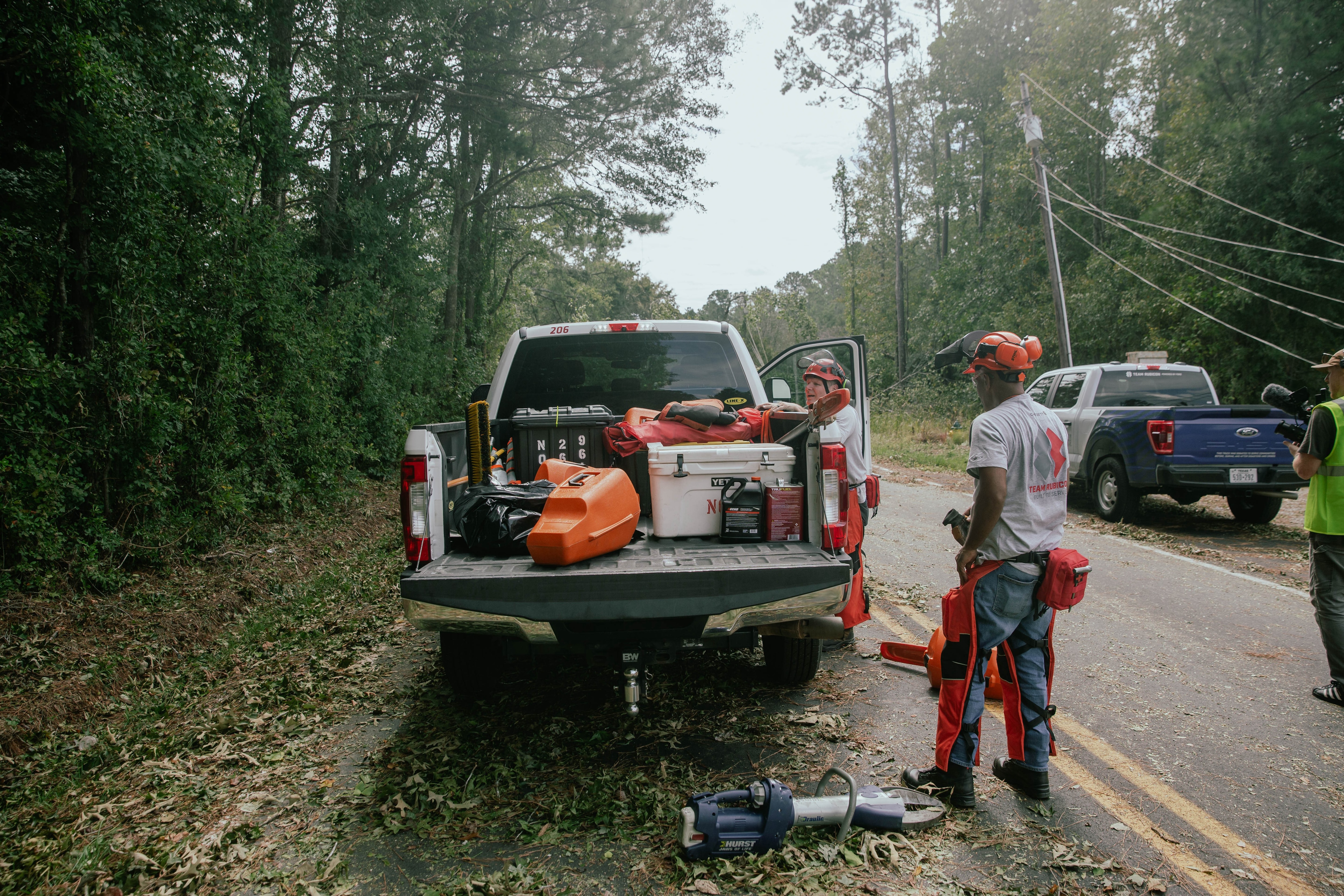
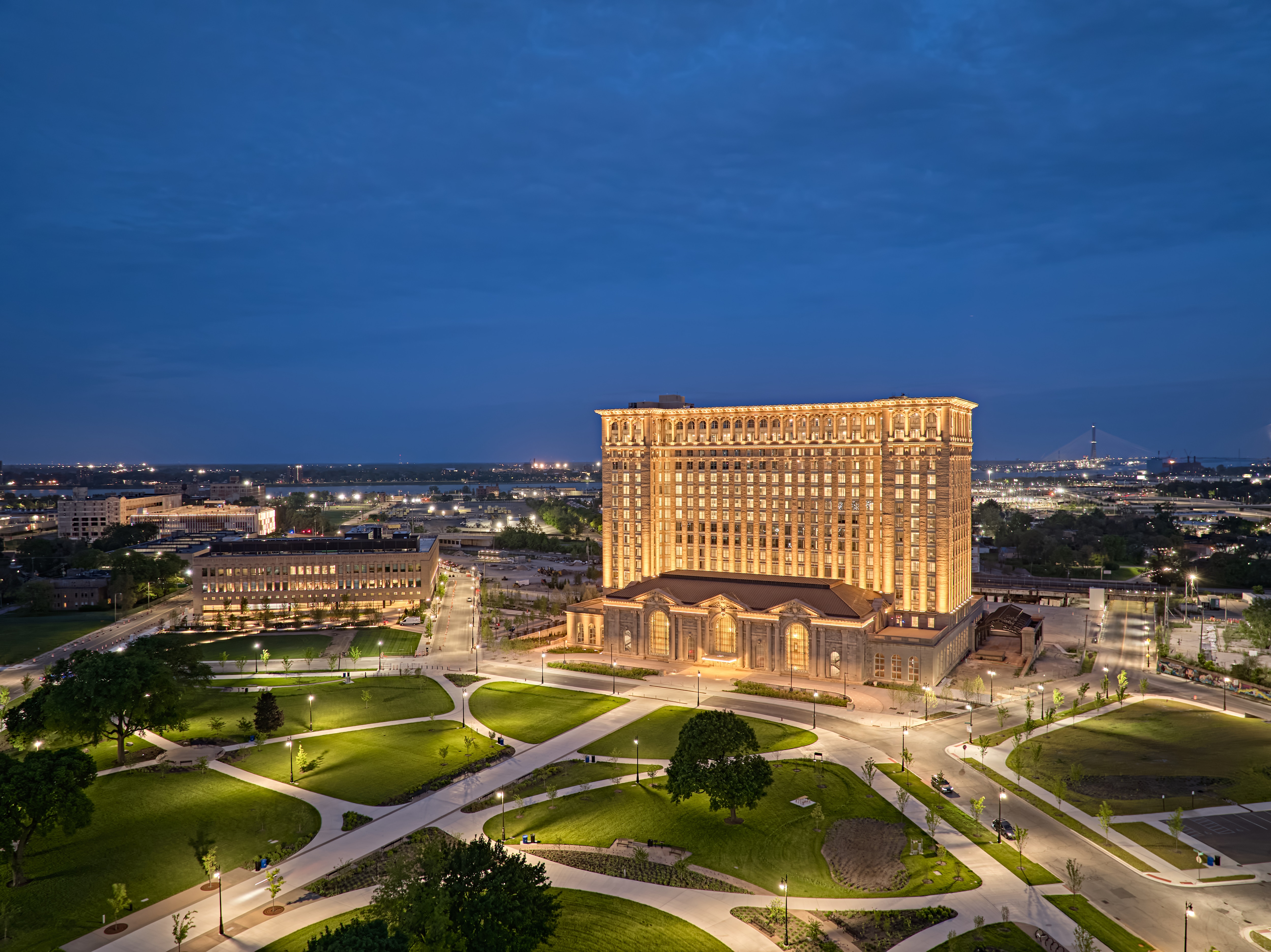
When I look back on the past year, it’s gratifying to be able to say — and have the data to show — that Ford is headed in the right direction and committed to staying the course, with carbon neutrality by 2050 as our North Star.
We continue to be on The Road To Better, following our purpose to help build a better world, and we’re doing it together with our partners and the communities we call home.
Bob Holycross is vice president, Chief Sustainability, Environment and Safety Officer at Ford.